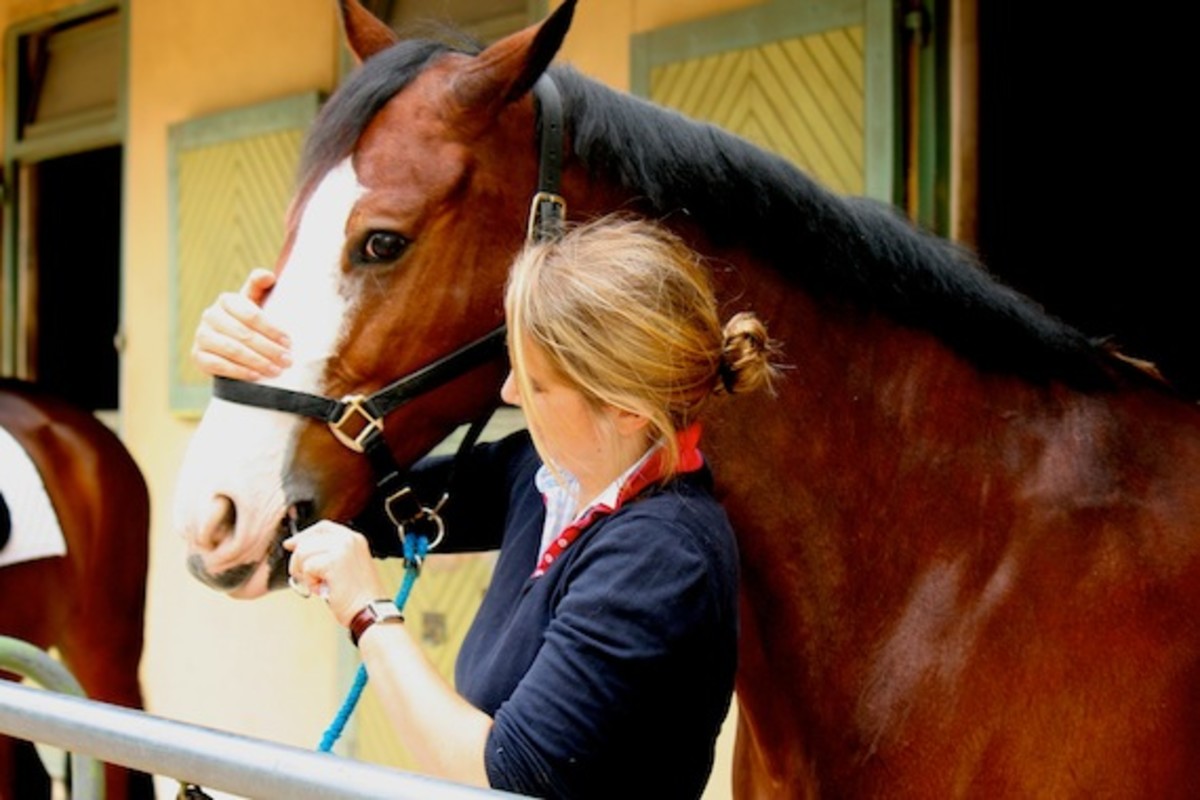It’s show time. And there you are walking your horse toward the in gate. It’s about to open. The crowd will cheer. The symptoms are palpable: rapid pulse, dry mouth, shaky voice, blushing and sweaty palms. Your trainer is talking, giving last minute instructions, but you don’t hear her anymore.

Riders forget their dressage freestyles, eventers get lost on cross-country, and saddle-seat equestrians sweat off all that carefully-applied makeup. It feels like the whole world is watching.
A comparison of stress levels of both horses and riders?confirms that riders suffer more stress when performing in front of an audience than when practicing but that the horses themselves react similarly whether or not spectators are present.
It is well known that horses show symptoms of stress when ridden but relatively little attention has been paid to stress in riders. Equestrian sport success relies on close cooperation between animals and their riders, but how does each component of the horse-rider team react to the stress of competing in front of an audience?
Researcher Mareike von Lewinski from Professor Dr. Christine Aurich’s group at the University of Vienna measured the changes in various stress-related parameters, measured as the level of stress hormones in saliva and the regularity of the pulse, in both horse riders.

The measurements were taken both when the presentation was completed in front of about a thousand spectators and when the riders practiced beforehand without any spectators. The results were then compared to assess how the riders and their mounts responded to the presence of the audience.
In line with previous experiments, the researchers observed symptoms of stress — higher cortisol concentrations in the saliva and more irregular heartbeats — both in horses and riders during the study.
However, the riders showed significantly higher levels of stress when an audience was present, confirming that participation in equestrian events is associated with stage fright, even in experienced riders.
There are many reasons why riders might be more stressed when performing in front of an audience than when they are merely practicing for an event. In contrast, the horses’ reactions were essentially independent of the presence of an audience.
The results imply that the riders might communicate their heightened anxiety to the animals. But, in reality, the transfer of emotions between rider and horse was absent. Aurich concedes,”We started with the assumption that the rider’s stress would affect his horse but this does not seem to be the case. Nevertheless, we should bear in mind that we were working with experienced horses and highly skilled riders. Our findings cannot be generalized to inexperienced riders, who might be less able to prevent their horses from being stressed by the situation.”
The research team has published several papers previously on stress levels in sport horses; this was their first study to involve the riders.
The paper, “Cortisol release, heart rate and heart rate variability in the horse and its rider: Different responses to training and performance“, by Mareike von Lewinski, Sophie Piao, Regina Erber, Natasha Ille, J?rg Aurich, Jean-Michel Faure, Erich M?stl and Christine Aurich has just been published online by the Veterinary Journal.
The work was carried out at the Graf Lehndorff Institute for Equine Science, a joint research unit of the University of Vienna and the Brandenburg State Stud at Neustadt (Dosse ), Germany and at the Ecole Nationale d`?quitation in Saumur, France.
Photos courtesy of the University of Vienna / J. Aurich









